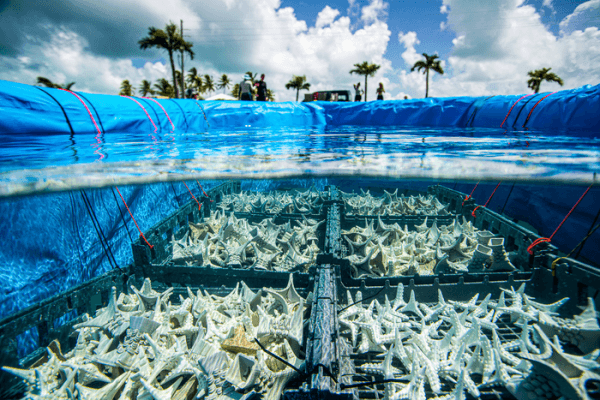In the last decade, coral restoration has become a mandatory tool to counteract coral reefs' fatal decline. SECORE develops techniques for sustainable and diverse coral restoration on larger scales. Breeding large numbers of coral offspring from natural spawning events within floating mesocosms has now proved successful among Caribbean locations.
Coral reefs' dire status has become more and more apparent to the wider public via reports of re-occurring global bleaching and disease events and subsequent mass die-offs of corals during the last decade. In their recently published policy paper, the International Coral Reef Society urges politicians and decision makers to take immediate action. "The next ten years offer the last chance to change the trajectory of coral reefs from heading towards world-wide collapse to heading towards slow but steady recovery" (Rebuilding Coral Reefs, Knowlton, et al. 2021). Apart from reversing global threats―above all mitigating climate change―and reducing local stressors, restoration has become an essential tool for coral reef management. Or, plainly spoken, a tool to give these vital ecosystems a fighting chance to survive into the next century.
SECORE International develops techniques to use sexually bred corals for sustainable, biodiverse coral restoration on larger scales, taking advantage of both scientists and engineers working in concert, as well as strong cooperation with partners worldwide. Breeding corals may be broken down into three simplified steps: I.) collecting coral spawn during natural spawning events and facilitating its fertilization; II.) culturing coral larvae to settle and metamorphose into coral polyps; III.) placing the young corals back into the wild.
Read more at: Secore International
Coral Rearing In-Situ Basin, CRIB, floating mesocosm to breed and grow corals (Photo Credit: Paul A Selvaggio, Pittsburgh Zoo & PPG Aquarium/SECORE)


